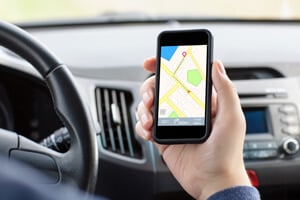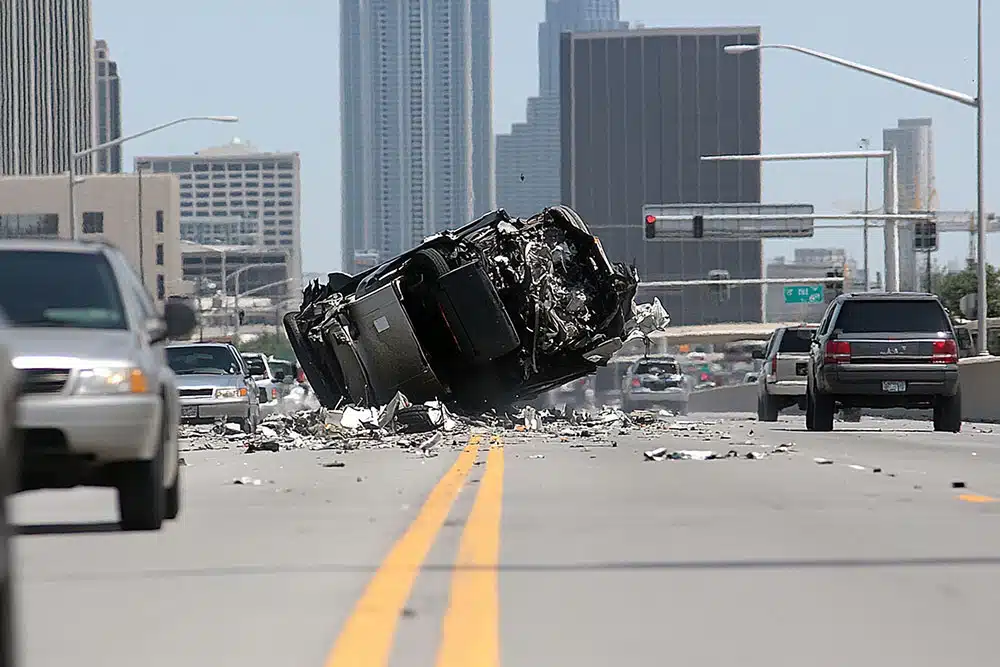
Before the age of smartphones, many of us relied on GPS devices in our vehicles. However, Google Maps and other navigation apps now provide the same information as many GPS devices at a much lower price. Yet are the dangers of distracted driving even greater because of these apps?
According to a recent article in the New York Times, the U.S. Department of Transportation (DOT) wants to regulate the use of navigation apps while driving. Navigation aids such as Google Maps can be very distracting for drivers and may result in serious car accidents. The DOT has proposed a bill that “would specify that the National Highway Traffic Safety Administration has the authority to set restrictions on the apps and later order changes if they are deemed dangerous.” This type of regulation would be similar to the authority NHTSA has over the mechanical features in cars.
Many automakers support the bill, but technology companies have staunchly opposed this type of regulation. For many technology companies, this type of regulation seems impractical and likely to be unsuccessful. According to Catherine McCullough, the executive director of the Intelligent Car Coalition, federal regulators do not have enough software engineers to make it happen. To be sure, she argued, “they don’t have the budget or the structure to oversee both Silicon Valley and the auto industry.”
The desire to regulate navigation aids on smartphones is in response to drivers who have been ticketed for cell phone use while driving when they had in actuality been using Google Maps or another navigation app. For instance, a California man received a ticket for using his cell phone while driving, but he was actually using a navigation app. In a recent decision, a California appellate court overturned his conviction as he was able to prove that he was neither talking nor texting on his phone and therefore did not violate any law.
Distracted Driving Key Facts and Statistics
What is distracted driving? It refers to more situations than simply using a cell phone while you are behind the wheel. Indeed, distracted driving can include any activity that takes the driver’s attention away from the road. According to NHTSA, distracted driving often involves some of the following activities:
- Using apps, such as navigation aids, on a smart phone;
- Talking on a cell phone;
- Texting while driving;
- Eating or drinking while you are behind the wheel;
- Reading or using a physical map;
- Applying makeup;
- Using a GPS device—even one that is not on a smartphone;
- Reaching over to change the radio station or to play a CD; or
- Talking to other passengers in the vehicle.
When a driver is distracted, he or she can put herself, passengers, and pedestrians at serious risk of personal injury. Automobile accidents happen much too often because of distracted driving, and they can lead to catastrophic and fatal injuries. Each year, more than 3,300 people are killed in distracted driving-related crashes, and about 421,000 sustain serious injuries.
Who is at highest risk of a distracted driving accident? While it is difficult to make predictions about passengers, pedestrians, and other bystanders, NHTSA does report the following:
- More than one quarter of all distracted drivers in fatal crashes are in their 20s.
- Another 10 percent of all fatal distracted driving accidents involve drivers under the age of 20.
- In other words, nearly one-third of all drivers involved in fatal distracted driving accidents are under the age of 30.
Distracted driving continues to plague the United States despite increased awareness of the dangers and stiffer penalties. It is important for every citizen to try to avoid becoming another statistic. Therefore, always avoid distractions while driving!



